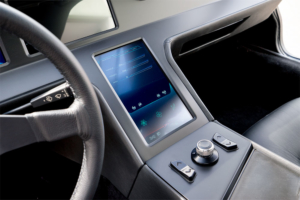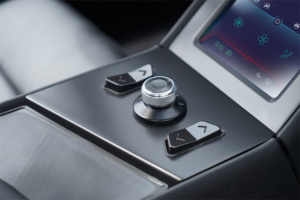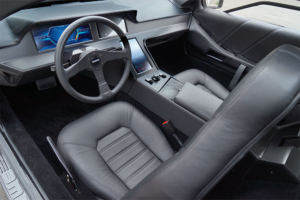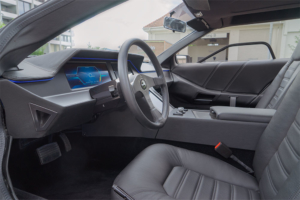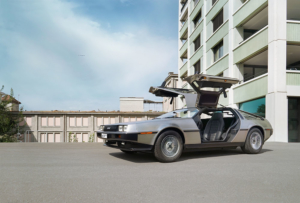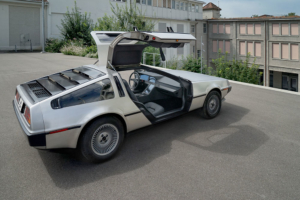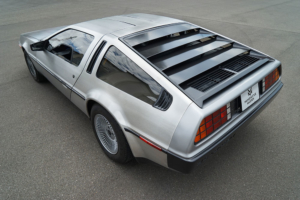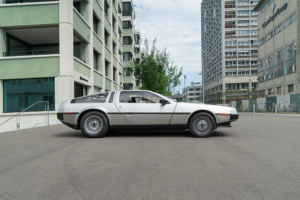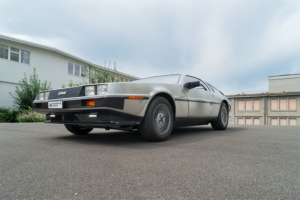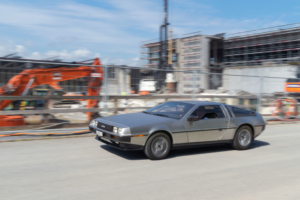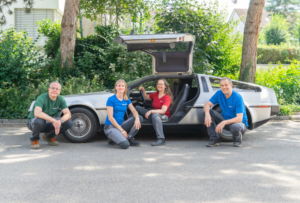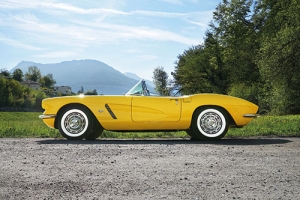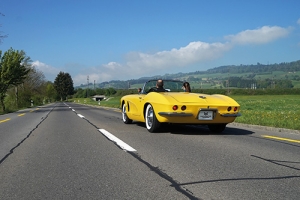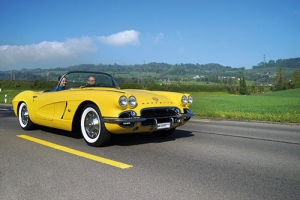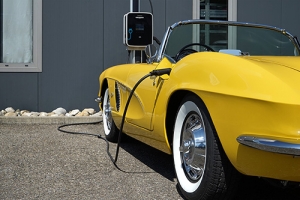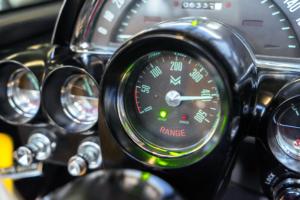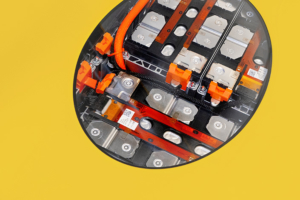Press releases
Nicht der erste elektrische DeLorean, aber vielleicht der schönste
Medienmitteilung vom 20. August 2024, Manufaktur Marton GmbH, Hagendorn
Kaum ein Fahrzeug verkörpert Zukunft mehr als der DeLorean. Dank seiner cineastischen Vergangenheit, und auch dank seines Designs. Irgendwie passten jedoch der eher schwache Motor und das bieder anmutende Innendesign des Fahrzeugs nie so recht dazu. Höchste Zeit also, das Auto in die Zukunft zu bringen. Mit Elektromotor und neuem Interieur.
read more
John DeLorean hatte viel vor. Nach steiler Karriere bei GM eckte er mit seinem Einsatz für Arbeitssicherheit, Bürgerrechte oder gar die Umwelt immer mehr an. Als er GM verliess und seine eigene Firma gründete, die DeLorean Motor Company, liess er die Welt wissen, dass er ein ‹ethisches› Auto bauen wolle. Er lockte Investoren mit dem Versprechen eines langlebigen Fahrzeugs mit geringen Betriebskosten und hoher Sicherheit. Schliesslich gelang es ihm, die britische Regierung für sein Vorhaben zu gewinnen, welche ihm eine Fabrik in der Nähe von Belfast finanzierte.
Doch die Entwicklung des Fahrzeugs lief harzig. Zu hohe Kosten zwangen DeLorean zu diversen Kompromissen. Trotz des einmaligen Designs vermochte das Fahrzeug schliesslich nicht zu überzeugen. Insgesamt wurden von 1981 bis zum Produktionsstopp Ende 1982 nur rund 9000 Stück produziert. Im Folgejahr wurde die Firma liquidiert. Somit kam für die DeLorean Motor Company der Film «Zurück in die Zukunft», der das Auto 1985 zum Kultauto werden liess, zu spät.
Endlich in der Zukunft angekommen
Einer der aus Kostengründen eingegangenen Kompromisse betraf ausgerechnet das Herz des Fahrzeugs, den Motor. Er brachte den DeLorean in etwas mehr als 10 Sekunden auf 100 km/h. Für einen Sportwagen dieser Preisklasse definitiv zu wenig, immerhin kostete er damals mehr als ein Porsche 911. Dass sich diese Schwäche mit einem Elektromotor beheben lässt, haben schon einige erkannt. Der DeLorean ist vermutlich eines der beliebtesten Fahrzeuge für Umbau-Projekte.
Ein weiterer, ziemlich augenfälliger Kompromiss betraf das Interieur. Denn das schrumpelige Leder der Sitze, das zusammengewürfelte Armaturenbrett und die klobige Mittelkonsole passten so gar nicht zum sonstigen Design des Fahrzeugs. Ganz anders sieht es nun in einem durch die Manufaktur Marton im zugerischen Hagendorn elektrifizierten DeLorean aus. Das neu gestaltete Innendesign orientiert sich deutlich an der Carrosserie. Deren Formsprache widerspiegelt sich nun im Armaturenbrett, den Anzeigen oder auch in kleinen Details wie den Fensterhebern. Ein weiterer Bildschirm in der Mittelkonsole liefert zusätzliche Informationen sowie Bedienmöglichkeiten. Und ja, natürlich lässt sich dort ein «Back to the Future»-Modus aktivieren – auf eigene Gefahr.
Technische Daten DeLorean DMC-12
Reichweite: 220 km
Drehmoment: 470 Nm
Beschleunigung (0 – 100 km/h): 6.7 s
Batteriekapazität: 40 kWh
Battery chemistry: LiNiMnCoO₂
Leistung Motor: max. 116 kW (158 PS)
Ladezeit AC Typ2: 125 km pro h
Ladezeit DC CCS: 280 km pro h
Projektwebsite:
www.manufakturmarton.ch/delorean-dmc/
For further information please contact:
Silvia Marton, Managing Director Manufaktur Marton GmbH
Tel.: +41 41 525 13 90
mfm@manufakturmarton.ch
www.manufakturmarton.ch
About Manufaktur Marton GmbH
Die Manufaktur Marton GmbH mit Sitz in Hagendorn bringt automobile Träume mit Elektromotor auf die Strasse. Das vierköpfige Team kreiert durch die Kombination von Elektrifizierung, Restaurierung und Design einzigartige Fahrzeuge. Das Unternehmen wurde 2018 von Silvia und Till Marton gegründet, die ihr Hobby zum Beruf machten. Seit 2011 befassen sich die beiden mit der Elektromobilität.
Images
We are happy to provide you with the following images in high resolution.
Feel free to contact us if you need further images.
All images below are licensed under the Creative Commons licence, unless otherwise stated: CC BY-NC-ND 4.0.
A 1962 Corvette goes electric
Press communiqué – Küssnacht am Rigi, 14 May 2019
Classic cars are loud, shudder like an earthquake, and can be a little capricious at times. But that’s not the case for the 1962 ‘Dinora’ Corvette made by Manufaktur Marton: this handcrafted, carefully restored car is virtually silent. What’s the secret? The vehicle is now powered by an electric motor instead of the original V8 engine.
read more
It may sound like heresy to some US classic car connoisseurs, as though the very soul of the vehicle had been ripped out. Then again, you could also argue that forward-looking technology has breathed new life into this old vehicle. What’s clear is that the all-electric Corvette has a polarising effect. And that’s a good thing.
At first glance, you can’t see how the Dinora has been transformed, other than the fact that the classic car has been completely restored and now looks brand new. If you were to open the bonnet, though, you wouldn’t find what you might be expecting. Instead of the engine, you get just a glimpse of the battery and its cells through a viewing window. Together with a second battery in the rear, the vehicle has an overall capacity of 68 kWh. That’s enough power to drive at least 300 km. The engine is now located where the vehicle’s gearbox used to be, and it has a peak performance of 185 kW (252 metric HP) and a torque of 390 Nm. As is customary for an electric engine, the car can harness this torque from the very first revolution, making it feel much more dynamic than its petrol counterpart. This is also clear from the fact that it can go from 0 to 100 km/h in just 5.8 seconds.
Made-to-measure electric mobility
A host of custom-made details remind you that you are not sitting in an ordinary Corvette even before switching on the engine. You won’t find the oil level or the cooling water temperature on the gauges; instead, they inform the driver about the current and average battery use, or the remaining available range. ‘It was important to us that the car looked as though it was designed to be electrically powered when it rolled off the assembly line 57 years ago,’ states Managing Director Silvia Marton. Those interested in viewing the vehicle for themselves can do so at the next ‘Oldtimer Sunday Morning’ meeting at Stierenmarkt in Zug, which is scheduled to take place on 2 June. The Dinora will also be touring Switzerland as part of the ‘Wave Trophy’ e-rally from 14 to 22 June.
From dirty polluter to climate hero?
As electric cars have an ecological footprint, too, the Dinora is currently being evaluated as part of a life cycle assessment. Even so, initial calculations already show that the fuel savings will be enough to offset the greenhouse gas emissions caused by the production of the electronic components after 40,000 km on the road at the latest. That is, provided the vehicle is charged with green electricity – as all electric cars should be.
Technical data electric car Dinora
Range (real range): min. 300 km
Torque: 390 Nm
Acceleration (0 – 100 km/h): 5.8 s
Speed: max. 155 km/h
Empty weight: 1480 kg
Battery capacity: 68 kWh
Battery chemistry: LiNiMnCoO₂
Engine typ: Hybrid Synchronous Motor
Engine performance: max. 185 kW
Charging time AC Typ2: 115 km per h
Charging time DC CCS (optional): 270 km per h
About Manufaktur Marton GmbH
Situated in Küssnacht am Rigi (Switzerland), Manufaktur Marton GmbH turns automotive dreams into electric-powered creations for the road. The company relies on its expertise in electric conversion and restoration to build vehicles that are utterly unique. The company was founded in 2018 by Silvia and Till Marton, who turned their hobby into their profession. The pair has been involved in electric mobility since 2011.
For further information please contact:
Silvia Marton, Managing Director Manufaktur Marton GmbH
Tel.: +41 41 525 13 90
mfm@manufakturmarton.ch
www.manufakturmarton.ch
Images
We are happy to provide you with the following images for use on the web.
Feel free to contact us if you need the images in print quality.
All images below are licensed under the Creative Commons licence, unless otherwise stated: CC BY-NC-ND 4.0.
Logo
The shape or color of the Manufaktur Marton GmbH logo may not be changed.
eps, jpg, png, svg

